Even the most stunning things don’t get a response.
I just don’t care. That is my automatic response to most things I see online right now.
Yes. We’re already sick and tired of the beloved “Studio Ghibli” style and that’s only the beginning.
Let’s talk about AI taking over everything and what are the possible outcomes. There isn’t a single one, because the future is uncertain. The only thing that’s certain is the “MEH” response.
I’ll walk you through some of the ideas of what future may bring. Starting with art, but we’ll get to coding and design too.
The art of MEH
Human creativity used to be admired. It wasn’t however admired just for the idea. If you had a great idea for a painting, but horrible execution, nobody would care. Imagine Da Vinci doing the Mona Lisa the way you see on the left. It probably wouldn’t be hanging in the Louvre right now.
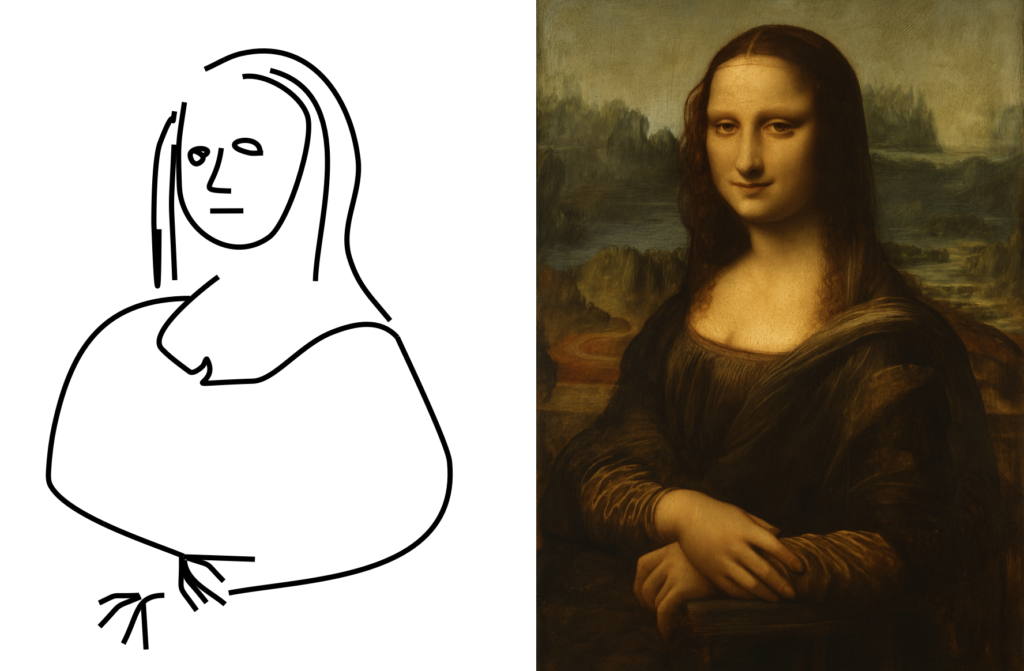
At least you had a good prompt, right?
Idea alone is worth nothing. Or next to nothing if it’s a really good one. What matters is the execution. The craft.
And now that craft is machined. All we’re left is our idea in a form of a prompt.
You can just go in and type:
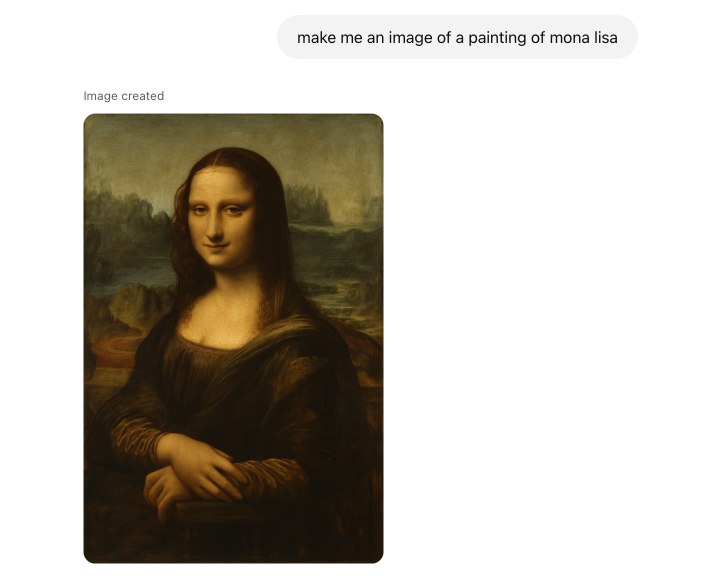
Da Vinci should’ve just waited some time and prompt instead of painting…
End result has no value
The thing about art is that it only has value because of the process. You can say Mark Rothko’s (or even Malevich’s) art is pretty meh, until you hear his story and how the paintings were created.
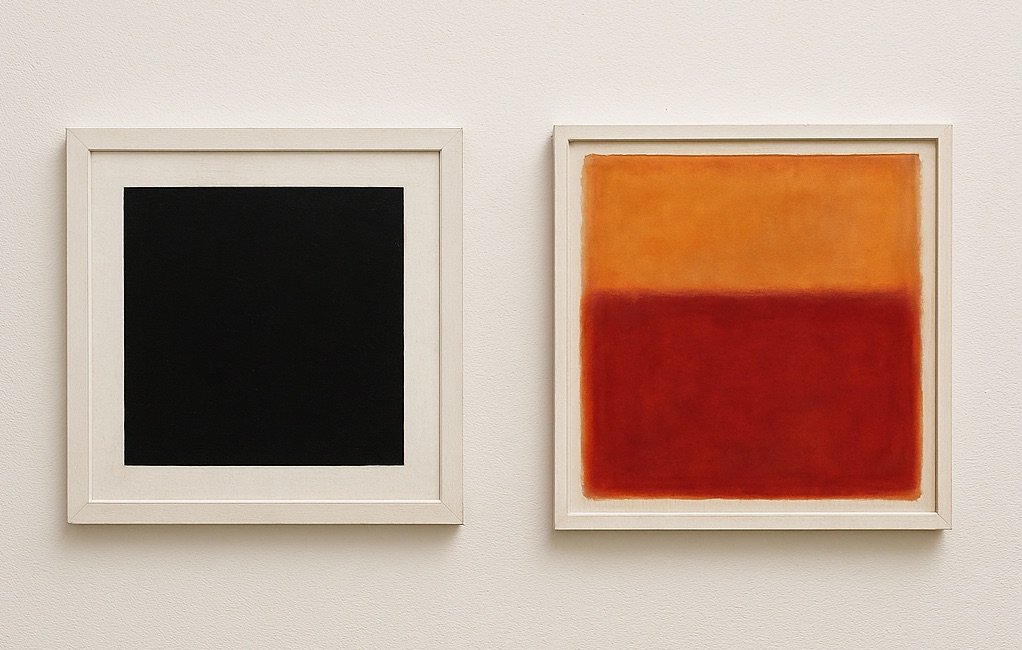
That process, story and human touch is what creates the value.
And craft, let’s not forget about craft. In the case of the above paintings there’s definitely less craft than in what Leonardo Da Vinci did. But they make up for it by breaking new grounds.
Vibe shift
Social media is constantly being bombarded by “creations” of prompt engineers.
A few years ago most of those images had that “ai vibe” to them.
With the more recent AI advancements, that “vibe” is mostly gone. You get high quality images out of it, that are indistinguishable from reality.
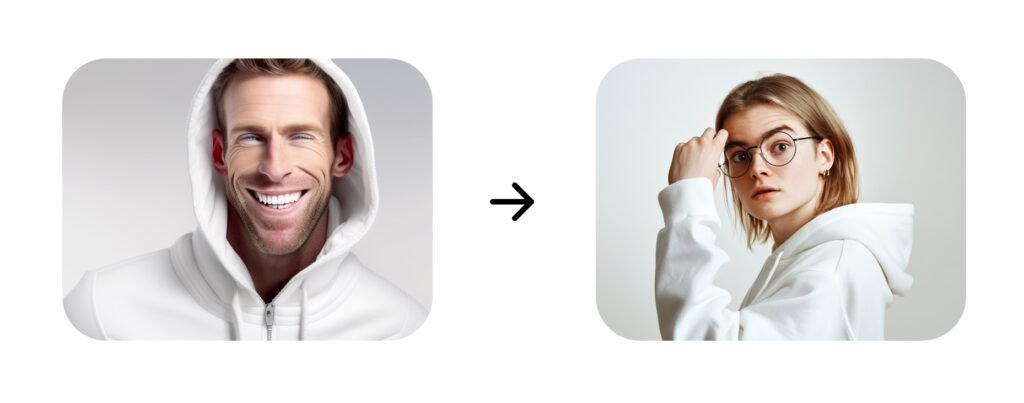
AI has caught up with the quality.
Now we’re at low/no effort creations without the process, backstory or craft. We end up with…
it’s just a nice image, and? so? what?
The “niceness” of the image is no longer celebrated. Everyone assumes AI made it for you, which makes them go “Meh” as a result. Nobody cares anymore.
Let’s explore graphic design, coding and UX/UI, and then think about the possible futures.
But first let’s ask ourselves a fundamental question. Or two.
What is creativity? Where do ideas come from?
I don’t believe ideas just appear. They’re a result of mixing experiences and inspirations. This is important to better understand whether what’s going on is “fair” or not. Please keep that in mind.

Now let’s talk specifics.
Graphic design
AI used to be hilariously bad any time it had to generate some text in an image. The letters seemed all random, distorted. It was a mess. Those images were so clearly AI generated, most people just swiped right past them on social media. If there was a definition of AI content slop, that was it.

Last year it got better with the Flux model, and now ChatGPT 4o pushed the limit even further. It now knows how to do text. Which led to many people generating ads with it.
Based on my 25+ years of experience, I can say these ads are already better than what most juniors make. And it will improve even further.

The process it uses isn’t that dissimilar to what humans do. You can find some reference images, or sketch something and add moodboard pics. Then ask it to combine it.
Some say it’s not as creative, but in reality it’s the exact same way humans do it. The only thing that differs is way more mouse clicks to get to a result.
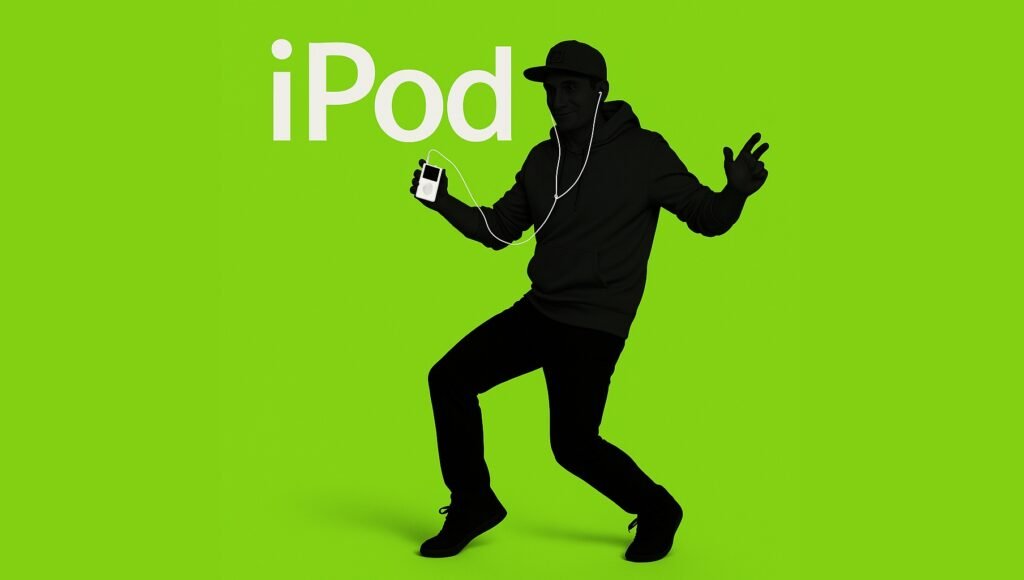
What will happen to graphic design?
AI is currently more of a tool — like Photoshop. It works faster, but you still need to feed it your inspiration, idea and prompt.
There will definitely be A LOT of graphic design and advertising done with AI alone. There will also be designers using AI to make slightly better stuff. And there will be room for custom, hand-made (and MUCH better) ads and graphic.
For some time the expert made designs will be the most expensive. The bottom 75% of the market will use AI to save money.
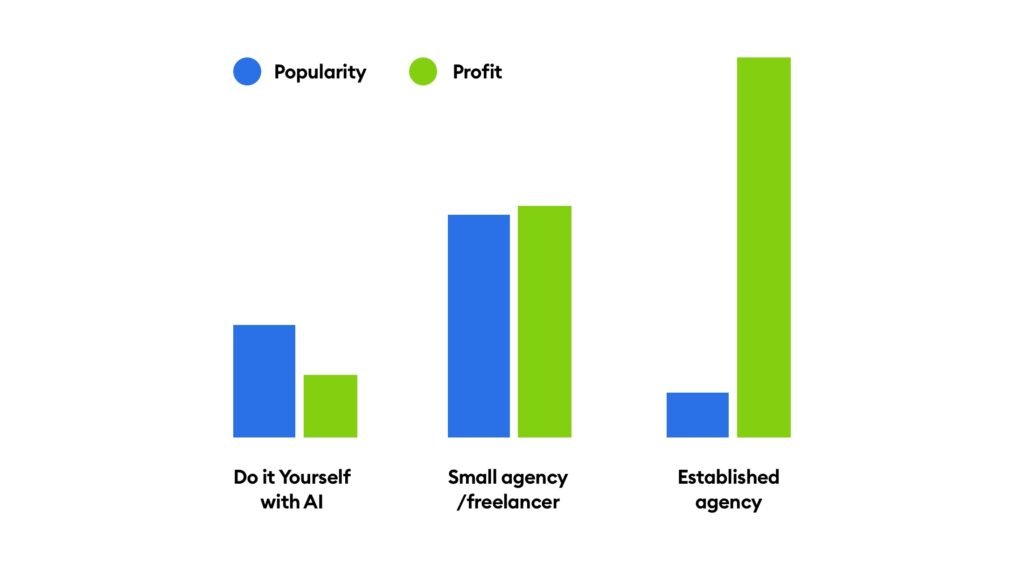
That’s because making a successful ad is not just about some end-result graphic. It requires taste, understanding of the market, research and the ability to pick the right inspirations.
But who’s there to say AI won’t be able to do market research for you in a few years? Then use that to generate relevant ads that are sure to perform. Part of the marketing stack I’m building is trying to tackle that exact problem. AI reactiveness to data when generating creatives. Making AI “Reactable” will bridge even that gap.
At some point it won’t be “people using AI” in the sense of skilled people. That future is coming too. Learning to prompt or even acquiring “taste” is not the safety net many people think.
Right now I can only make a short-term prediction. We’ll see a further segmentation of the market. Lowest budget clients will try using AI to do stuff themselves. Mid-range agencies will use AI to deliver creatives faster and A LOT cheaper. It will become a quantity game if you want any serious cash.
At some point the numbers will shift like this:

And high-end, reputable agencies will still get expensive clients. They will use these tools too, but their experience will allow them to combine that with human, manual work when necessary. Their outputs will be much higher quality for a year or two. Maybe longer.
There are a couple of potential long-term futures that I’ll discuss at the end. For now, if you’re in graphic design — start gaining reputation and as many auxiliary skills as possible.

UX/UI design vs AI
Remember 2022? Asking midjourney to generate UI created these weirdly beautiful art pieces that made no sense. They were trained on Dribbble shots, but not the right kind. It was form over function to an extent that made it unusable.
AI understood how to “paint pixels” but we all know UX design is more than just pixels.
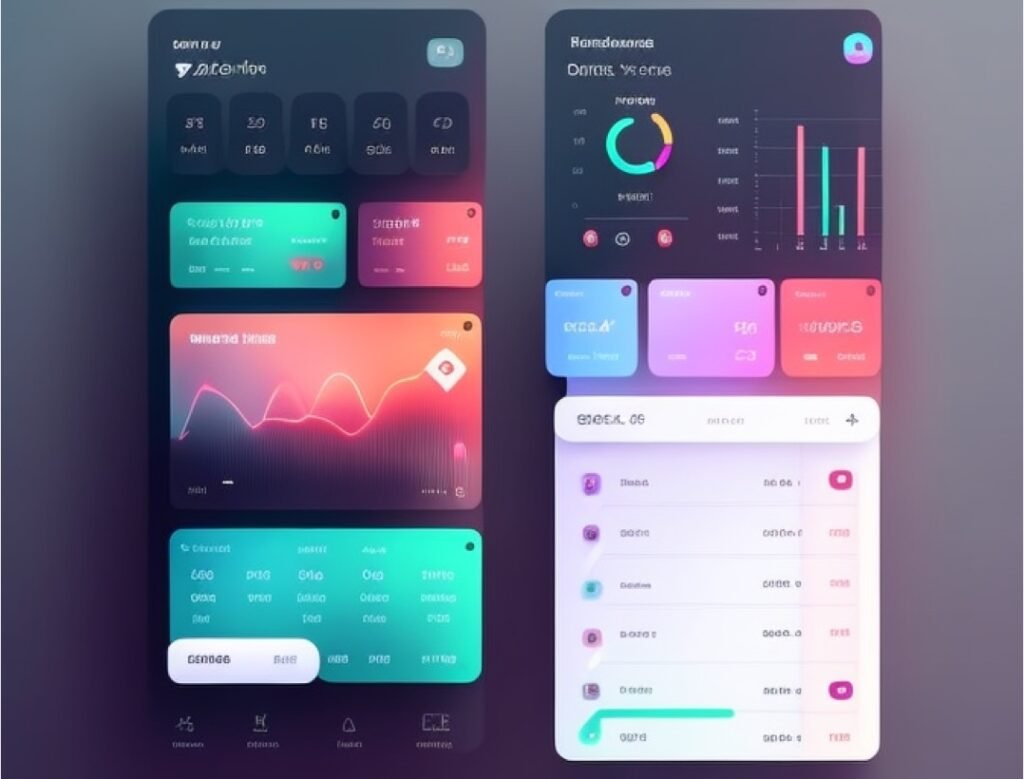
Then GPT 4o image generation came along. I tested it a little and the results are around level 4 of UI design. Yes. They are better than most juniors and some mids. That’s of course from a UI design standpoint.
Take a look at this partial dashboard image. There are some little bugs here and there — sure. But as a whole, this would get quite a lot of likes on sites like Dribbble or SquareONE not that long ago.

Of course UX design is more than just a passable UI dashboard. It needs to make sense. Solve problems.
That comes from research and experience. AI in that case would be just a tool (like Sketch or Figma) that allows you to create something a little faster. But even before AI, we had UI kits.
If you knew what you were doing, you can just start drag and dropping components. Making a dashboard like that if you had the components could take minutes.
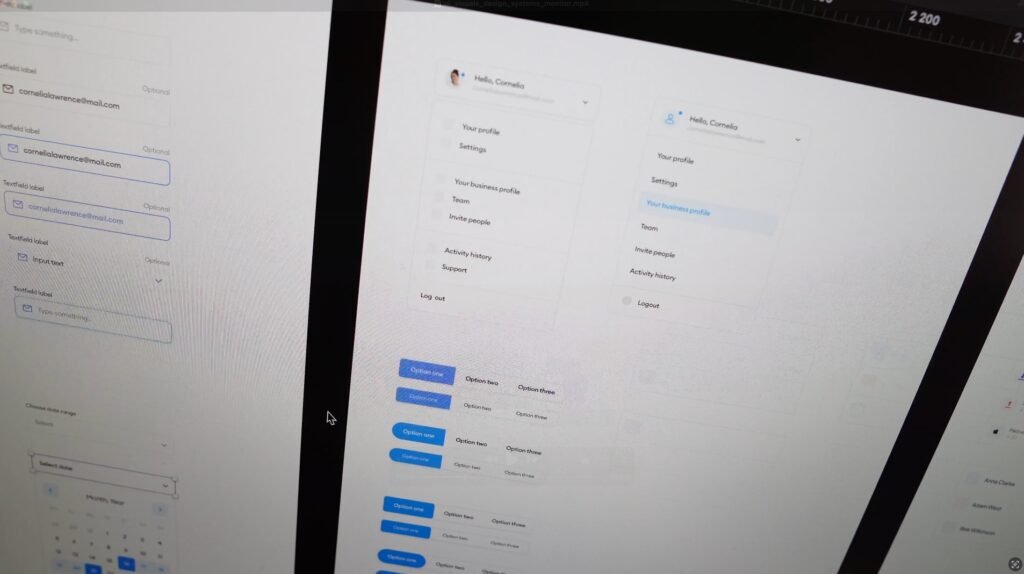
That’s all given you knew what you were doing.
See? That’s not as scary anymore. It’s just another input method. Instead of dropping components, you just ask AI to drop them for you.
There is a “but” coming though.
Right now the moat for most skilled designers is their experience, general UX heuristics (stuff we know) and research.
We’ve been feeding these AI models with heuristics for years now. They are getting much better at that part already. Many will also share their experience with the models to gain a temporary edge.

They’ll upload everything they know, so they’ll be those “people using AI” people who replace people not using AI. Then AI will have both their knowledge and experience. This is inevitable and it’s stupid to fight it. I’m even doing this myself.
A lot of my knowledge is already in AI models. Some LLM’s even used pirated books without permission to train. Likely my books as well. See? That knowledge is on its way there.
The last thing left is research.
A big chunk of research if quantitative. Numbers and data points. A lot of that happens via various analytics tools in apps and websites. Some tools already parse that data for you using AI.
It’s only a matter of time.
AI will do research, then propose a design without you even needing to prompt. You should’ve probably spent that time touching some grass instead of learning to prompt.
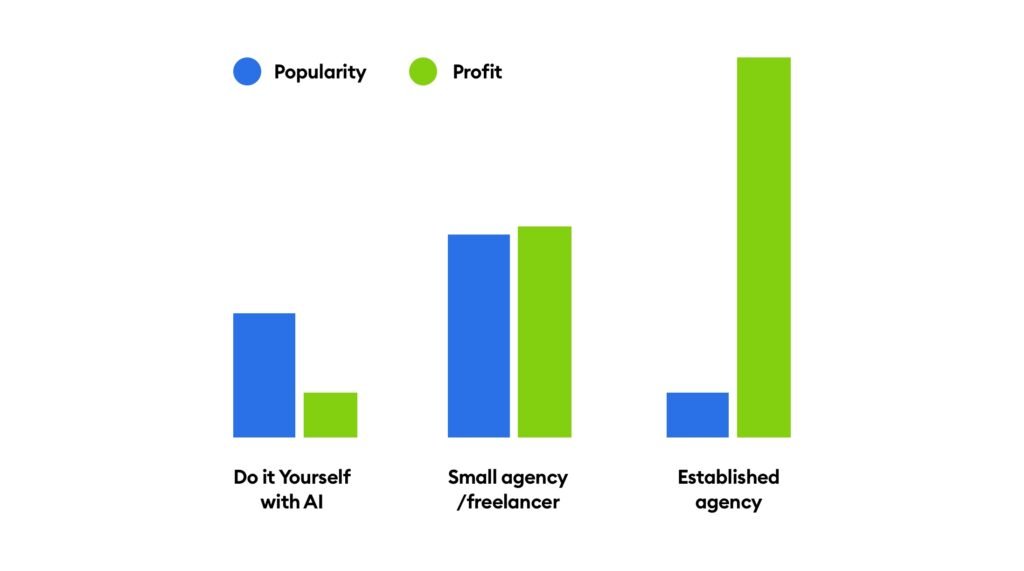
Future of UX/UI design with AI
I believe this will play out exactly the same as with graphic design. Some clients will do their own “UX” with AI.
Freelancers and small agencies will use AI to deliver good enough work faster. It will also get a lot cheaper. Prices for UX work at this level will go waaaay down. Once again you’ll have to compete on quantity to earn more.
Established agencies and famous designers have it easier. Clients will come to them because they want that human connection. Those agencies will also use AI. But they will have the skills to push beyond what AI can do — also for a few years.
They will continue to charge pretty good rates. An expert with a decade of experience that uses AI will be ahead of a twitter bro that downloaded a prompt pack. At least in the minds of the clients.
The industry will also shift to merging designer and frontend developer roles again. Back when I started in 2001, designers were the people who coded the frontend. It makes total sense, and with AI tools you can now vibe-code entire apps.

What should you do if you’re an UX/UI designer?
I’ve been talking about it since I made my first AI course that had no AI tips. Back then mane people complained:
Why are there no prompting tips in there?!
Easy. That’s because all those things quickly become irrelevant. Models change and improve. The human factors are staying the same.

What you should focus on:
- Learn soft skills.
- Learn to communicate clearly.
- Learn to convincingly explain value of what you do.
- Learn to annotate your work.

We don’t know when AI will merge research with coding full, functional interfaces. That process can however be automated eventually. I mean FULLY automated. No prompting. Nobody in charge. Just a specified goal: “we want to sell more of our product”.
That can take a few more years. For now soft skills and communicating value is key for your freelance or agency business to stay afloat. You’ll earn more for at least a while, as the market gets optimised and devalued.
A potential light at the end of the tunnel is optimisation fatigue — I’ll cover it in the last segment of this story.

Coding
“You should learn to code.”
“Learning to code makes no sense anymore.”
Development is not my main area of expertise but I want to touch up on it a little bit.
Have you heard of vibe-coding? It’s prompting coding bots using English to create code. You ask the bot for some result and sip on a coffee while it codes. Smiling to yourself in a warm, Bali sun. Then it spits out something that works. It has some issues so you prompt again explaining what you want fixed.
If you’re lucky at the end you’ll have some kind of an app.
Maybe even one that will make money.
The problem right now is that while vibe coding is fun, vibe debugging is not. You can vibe yourself into breaking your entire app.
AI does help developers who know how to code in a big way. It speeds up their workflows. If you don’t know how to code it can allow you to build something for the first time. But one issue can completely block you.
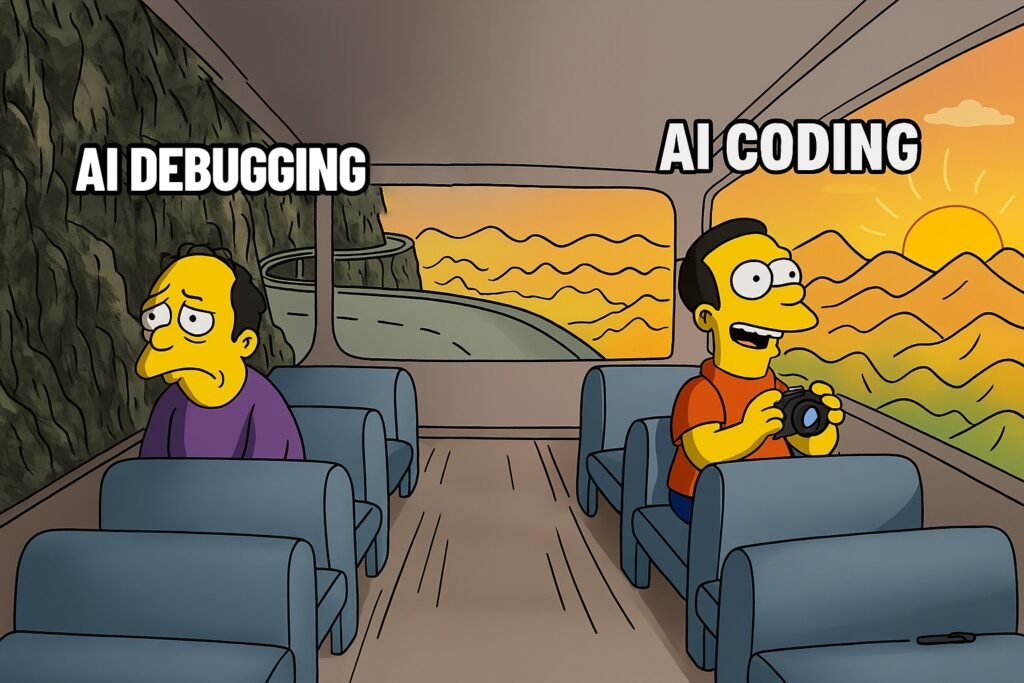
That is now. In the future AI will get better at self-debugging and understanding intent.
Will it replace developers? Not really. It will augment skilled developers and wipe out all the juniors and mids.
Our imaginary moats
Humans are interesting creatures. We build mental concepts for ourselves, which we stick to even when proven wrong. Take an example of political parties. It’s pure tribalism.
Only a small percentage of the population is objective. The rest blindly follows “their side”. If they did something wrong your mind pushes it away. Like it never happened.
We live in those bubbles and it’s very hard to pop them. Let me try.
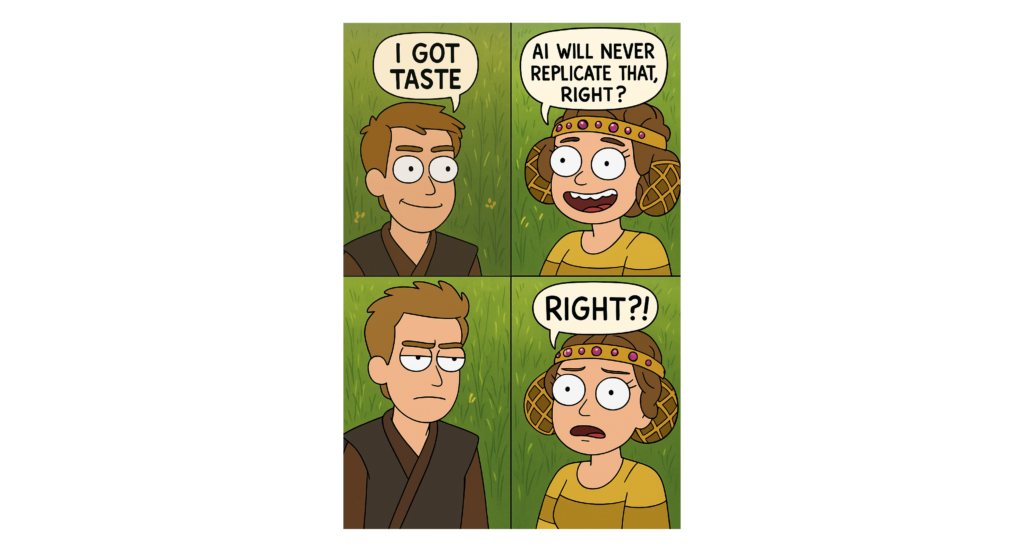
Taste
One of those bubbles is the belief that to stay relevant in the world of AI you need taste. That elusive taste is that famous human factor. AI can never replicate that, right?
Right?!
What is taste though? It’s a set of experiences and knowledge. And like we discussed before with graphic design, we are “feeding” AI our tastebuds. Yes. It will acquire taste.
Your “editorial” skills won’t matter anymore. AI will pick the best solution itself. Your taste is just as temporary as your prompt engineering skills.
Learn to prompt
“Skill of the future is prompt engineering.”
No. It’s not. That is another temporary skill. ChatGPT 4o is now even better at understanding the dumbest of prompts. It adjust to the user, not the other way around.
Learning to prompt will soon be obsolete as well. Sure, it gives you a tiny edge right now but that won’t last.

Their true agenda
The goal of AI companies is to make as much money as possible. Yes. That includes even those open, non-profit companies that famously pivoted to “closed and for profit”.
If you think us “experts” are their main target, you’re probably not expert enough. We’re just the early adopters. If we’re lucky we wrap some LLM in something and make some quick cash.
The end goal is for any non-tech-savvy person to be able to get great results. They want everyone’s subscription. Not just from some designers and developers.
That means the models will get better. In parallel, their understanding of a whole spectrum of users will also improve. You won’t have to be smart anymore.

Outcomes / incomes
What are the potential outcomes of this huge shift? Of course it’s impossible to predict. But let’s try anyway.
This is a mass-market dilution of work value. The majority of digital work will from now on become cheaper and cheaper. Then, eventually it will remain in the hands of 1% of craftsmen.
Just like factories didn’t kill craft. You can get a knife at IKEA, that was just poured into a mold somewhere in China. Or you can get a Klosy knife, that’s handmade and 10x more expensive.
(Funny story, me and my wife met at a cafe that later went bust and that knife maker took over the spot. We’ll soon be going to a knife making workshop there).
Incomes will drop. But is that the only possible outcome?
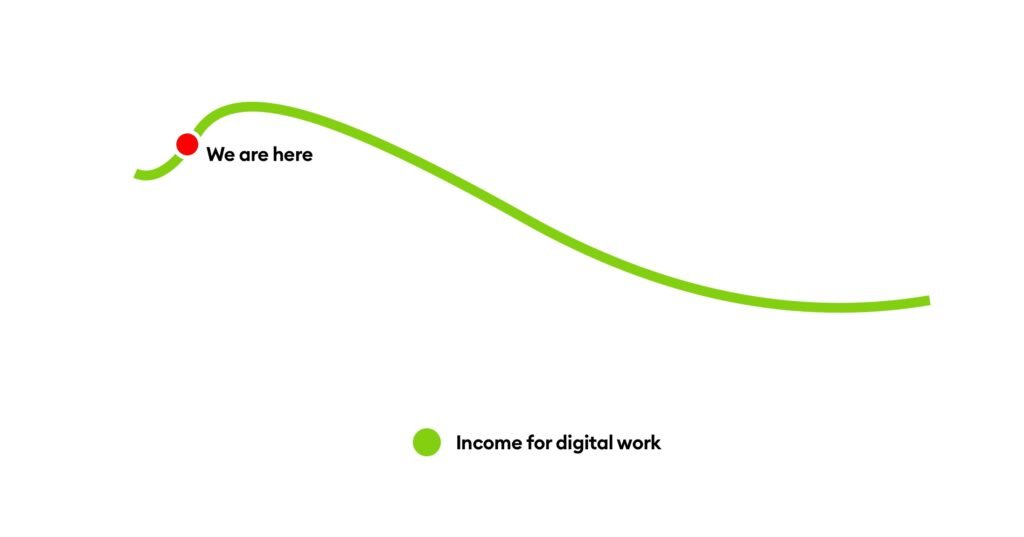
The Meh factor
The problem with low effort “generation” of stuff is that people don’t value it as much. And that’s not only financially. It also includes interest.
We’re in an attention economy, and for some reason we refuse to give a lot of attention to ANYTHING AI created. Maybe we do need/want that back story. The struggle. The process.
The mass production of digital “AI goods” can result in people craving those imperfect, human-made ones even more. If we’re lucky we’ll grab a 5% market share instead of 1% like with handmade physical products.
Digital work always felt a little superficial. Less valuable.
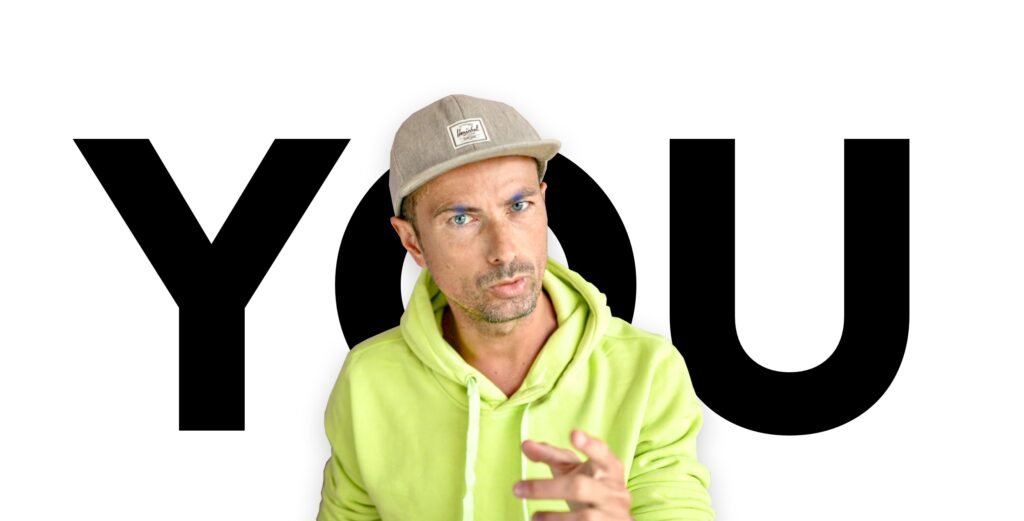
You
I believe it’s about you. It was always about you. Right from the start. What you make is hugely influenced by who you are.
People either resonate with that or they don’t. But the design itself isn’t the key here. It has to be good, obviously. But there’s a lot of good design there already.
You need to work on the You part. And sure — use AI. Don’t get replaced by “those using AI”. But don’t ever believe that it’s the path to success.
A good future will be guided by your curiosity and ability to make decisions. Remember how in movies, we usually win with AI by making emotional, irrational decisions?
Learn to connect dots and follow your heart. The world didn’t end with the steam machine. It won’t end with AI generating apps and websites either.
